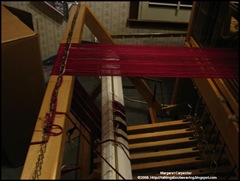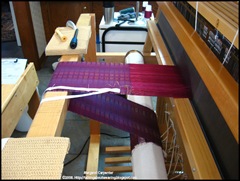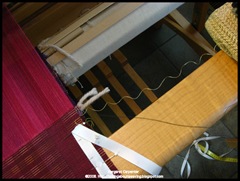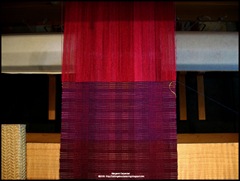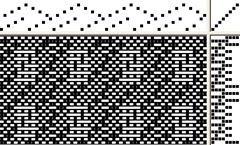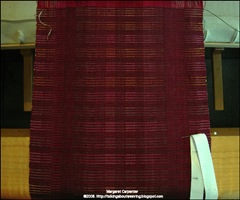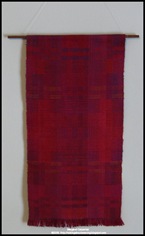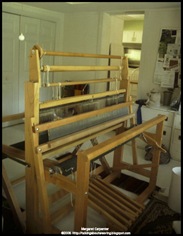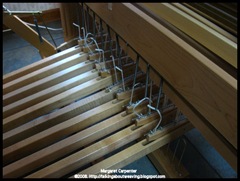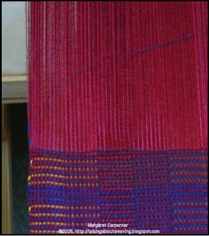Posted by Peg in South Carolina
I said this in a recent post, as I was preparing for making the warp: “The warp will consist of the white cotton, separated approximately every 3.5 inches by 2 ends of ?”
So, my plan for the warp consisted of 70 bouts.
- Bout 1: 4 ends of brown + 92 ends of white
- Bouts 2-6: 2 ends of brown + 90 ends of white
- Bout 7: 2 ends of brown + 92 ends of white + 4 ends of brown
You might have noticed that I have decided on brown for the narrow warp stripes.
You might also have noticed the greater number of ends in the bouts that go on each end. I have anticipated more draw-in at the selvedges than throughout the warp and so have added more warp ends there in the hope of having all the blocks and stripes the same width.
As I was making the first bout, I decided that at 24 epi, 2 ends of brown 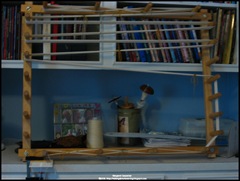 is not enough. So I’m changing to 4 ends, but with 8 ends of brown on each end. I am still compensating for selvedge draw-in in these calculations.
is not enough. So I’m changing to 4 ends, but with 8 ends of brown on each end. I am still compensating for selvedge draw-in in these calculations.
The completed first bout is shown on the warping board here. I had made this as bout 1 for the original plan. I have now simply relabeled it as bout 1.
I could have used 6 ends of brown on the sides. Actually I would have preferred 6 warp ends. With the floating selvedge that would give me 7 warp ends on each side which I think would be just perfect. But I didn’t want to.
Why not?
I am warping with a paddle, 2 ends at a time. That creates warp groups of 4 ends. The number of ends in a raddle opening will be 12. That means that I need to have the number of ends in a bout divisible by 4 or else I will end up splitting groups in the raddle.
I have read a number of times recently how bad it is to split groups of warp ends in the raddle. That is, it is apparently not good to put two ends of one group into one raddle opening and another two in the next raddle opening. It would seem that somehow as you move the warp forward during the weaving, the warp ends can get crossed up.
Frankly, I don’t see quite how this happens. I’ve tried to picture it in my head, but I am not a good imaginer. I have split groups in the last few silk warps I have made and, believe me, at 72 epi I did that with fear and trembling each time. But each time everything went fine. Perhaps a reader here has a clue?
In any case, I am creating a warp this time where there will be no split groups in the raddle.
Related Post: Warping Work Station with Coffee
"Changing My Mind at the Warping Board" was written by Margaret Carpenter for Talking about Weaving and was originally posted on September 30, 2008. © 2008 Margaret Carpenter aka Peg in South Carolina

